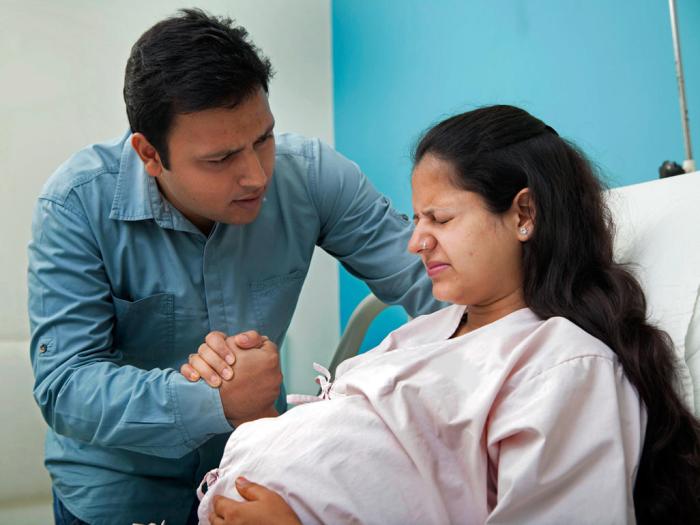Catherine is pregnant and preparing for childbirth – Catherine’s pregnancy marks a transformative chapter in her life, embarking on the journey of preparing for childbirth. This comprehensive guide will delve into the essential aspects of prenatal care, labor and delivery, postpartum recovery, and the emotional rollercoaster that accompanies this momentous experience.
As Catherine navigates the complexities of pregnancy, we will explore the significance of regular checkups, dietary guidelines, and lifestyle modifications to ensure a healthy pregnancy and optimal fetal development.
Prenatal Care and Health Management

Prenatal care plays a crucial role in ensuring a healthy pregnancy and childbirth. It involves regular checkups with a healthcare provider to monitor the health of the mother and the developing fetus. During these checkups, the provider will:
- Track the mother’s weight, blood pressure, and urine
- Perform a physical exam to check for any abnormalities
- Monitor the fetus’s growth and development through ultrasound exams
- Discuss dietary guidelines, exercise recommendations, and lifestyle modifications
- Provide education on prenatal vitamins, vaccinations, and other important topics
Dietary Guidelines
Maintaining a healthy diet is essential during pregnancy. The recommended daily calorie intake varies depending on the trimester and the mother’s weight, but generally ranges from 2,200 to 2,500 calories. The diet should include:
- Plenty of fruits and vegetables
- Lean protein sources
- Whole grains
- Low-fat dairy products
- Limited amounts of saturated and trans fats, sugar, and sodium
Exercise Recommendations
Regular exercise is also beneficial during pregnancy, unless contraindicated by a healthcare provider. Recommended activities include:
- Walking
- Swimming
- Yoga
- Pilates
- Cycling
Lifestyle Modifications
Certain lifestyle modifications are recommended during pregnancy to promote a healthy pregnancy and reduce the risk of complications. These include:
- Quitting smoking
- Limiting alcohol consumption
- Avoiding certain medications and herbal supplements
- Getting enough sleep
- Managing stress
Preparing for Labor and Delivery

Labor is the process by which the baby is born. It is divided into three stages:
Stage 1: Early Labor
- Contractions become regular and gradually increase in intensity
- The cervix dilates (opens) to 10 centimeters
- The water may break
Stage 2: Active Labor
- The cervix is fully dilated
- The baby descends through the birth canal
- The baby is born
Stage 3: Placental Delivery
- The placenta separates from the uterine wall and is delivered
- The mother may experience some bleeding
Birth Plan, Catherine is pregnant and preparing for childbirth
A birth plan is a document that Artikels the mother’s preferences for labor and delivery. It can include:
- The desired pain management techniques
- The position in which the mother wishes to deliver
- Whether or not the mother wants to have an episiotomy
- Who the mother wants present during the birth
It is important to discuss the birth plan with the healthcare provider and make any necessary modifications.
Postpartum Recovery and Care

After childbirth, the mother’s body goes through a number of physical and emotional changes.
Physical Changes
- Uterus contracts back to its pre-pregnancy size
- Vaginal bleeding (lochia) occurs for several weeks
- Breasts become engorged and milk production begins
- Hemorrhoids and varicose veins may develop
Emotional Changes
- The mother may experience a range of emotions, including joy, exhaustion, and anxiety
- The “baby blues” are common and usually resolve within a few weeks
- More severe postpartum depression may require professional help
Self-Care
Proper self-care is essential during the postpartum period. This includes:
- Getting plenty of rest
- Eating a healthy diet
- Exercising regularly (as recommended by the healthcare provider)
- Taking care of the perineal area
- Breastfeeding (if desired)
- Seeking support from family and friends
Essential FAQs: Catherine Is Pregnant And Preparing For Childbirth
What are the most important aspects of prenatal care?
Regular checkups, monitoring fetal growth, dietary guidelines, exercise recommendations, and lifestyle modifications are crucial for ensuring a healthy pregnancy.
What are the signs and symptoms of labor?
Contractions, rupture of membranes, and bloody show are common signs indicating the onset of labor.
What is a birth plan and why is it important?
A birth plan Artikels your preferences for labor and delivery, including pain management, delivery position, and newborn care. It facilitates communication with healthcare providers and ensures your wishes are respected.
